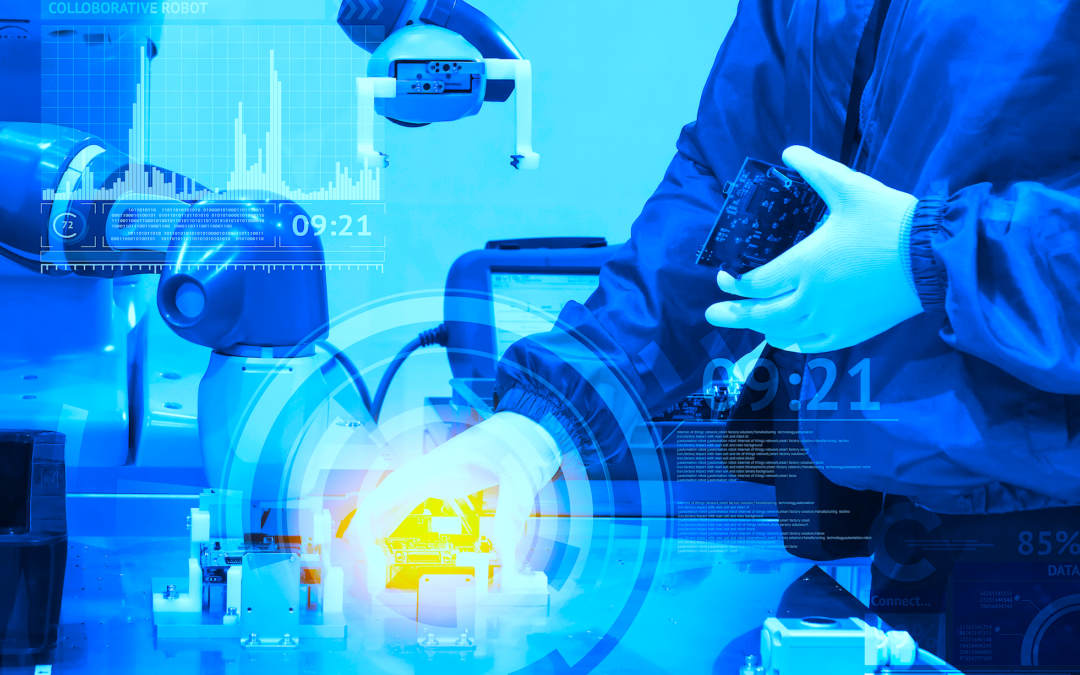In this era of shortages in skills and labor, many small- and mid-sized businesses are turning to an ever-growing number of affordable automation technologies. But, it’s not necessarily traditional automation that’s attracting their attention. Take robotics for example.
Traditionally, robots have been bolted to the floor, where they’ve operated autonomously inside large safety-caged areas to perform jobs that are dirty, dangerous, expensive, precision, repetitive, and often boring. And, they don’t mind the 24-7 repetitive, boring work. Robots have always been good at doing work that people don’t want to do.
REPOSITIONING ROBOTS
The “old” robot has had a major makeover. Its new generation has become more user-friendly. Sometimes referred to as petting-zoo versions of robotic technology, “collaborative robots” (“cobots”) have not been replacing humans—they’ve begun replacing other robots. And for good reason.
Cobots can simulate human actions (machine tending, fastening, screw driving, pick and place, stacking, packing, gluing, off-loading, starting-stopping machines, inspecting parts). Sometimes, they’re mounted on small platforms inside cages where humans cannot work without shutting off the machine. Because of their size and flexible mounting platforms, cobots are breathing new life (and applications) into older machines by working in close proximity with humans and their machines and augmenting human-supplied tasks.
PLAYERS IN THE 4th INDUSTRIAL REVOLUTION
Industry is moving rapidly toward more-affordable and capable automation. Industry 4.0 (the “Fourth Industrial Revolution”) relies on data exchanges such as the IoT (Internet of Things) and IIoT (Industrial Internet of Things), coupled with artificial intelligence (AI), cloud computing, additive manufacturing (3D printing), augmented reality (AR), systems integration, and more. To some businesses, this can appear to be an expensive shift in the way their work gets done. There is, however, another way to look at the situation.
Maybe those technologies aren’t as expensive as they seem, considering the skills gaps and labor shortages that many operations are experiencing. Take for example what Patrick Bass, CEO of Thyssenkrupp North America said recently. “A worker costing $67,000 annually becomes significantly more effective working alongside a one-time investment in a $30,000 cobot.” After all, cobots have been shown to help improve workflow, reduce takt time, and boost quality and overall productivity of many industrial operations.
LEVERAGING COBOT CAPABILITIES
Cobots are designed to share the workspace with humans. Super-strong, highly precise, and repeatable, they enhance and augment human capabilities, making their human counterparts more efficient and effective. Translation: Productivity increases.
Again, note that cobots are meant to help humans do their jobs, rather than replace the human component, as was the plan for traditional robots. A cobot’s ability to “assist” actual people on a plant floor goes a long way in making the humans’ work easier and more repeatable.
Unlike many previous models, today’s cobots feature built-in safety devices that allow them to operate in un-caged environments. They’re also easy to program with fast setups and flexible applications. In fact, many cobots are simply “trained” by humans manipulating a units’ robotic arms and tooling while going through a procedure. The cobot “remembers” the steps in the process and repeats them on command. All of these features and capabilities are now available to and affordable for small and mid-sized companies.
MAINTENANCE ISSUES
As with any new technology, cobots themselves require new and sometimes different maintenance plans, including, among other things, plans for maintaining the mini-robot itself, as well as maintenance related to accessories, tooling, sensors, software, calibration, joint replacement, etc.
In the future, it may be possible for a cobot to recognize the need for minor maintenance of a machine, alert humans, and prevent breakdowns. Then, it may also be possible for the cobot to independently complete maintenance tasks before any downtime interrupts production.
Shortages of skills and general labor across today’s industrial landscape (especially when coupled with ever-growing automation applications means the tasks of maintaining machinery must continue to improve and require fewer humans.
BOTTOM LINE
Consider this scenario: Match up a cobot trained to perform minor maintenance with an AGV that can freely move around the factory floor and watch out. When automation sneaks up on us, we have most likely freed up maintenance technicians for the higher-skilled work that only humans can do. Who knows? One day, a cobot may even be able to fix itself.TRR
ABOUT THE AUTHOR
Bob Williamson is a long-time contributor to the people-side of the world-class-maintenance and manufacturing body of knowledge across dozens of industry types. His background in maintenance, machine and tool design, and teaching has positioned his work with over 500 companies and plants, facilities, and equipment-oriented organizations. Contact him directly at 512-800-6031 or bwilliamson@theramreview.com.
Tags: automation, robotics, collaborative robots, cobots, skills crisis, plant safety, maintenance management



